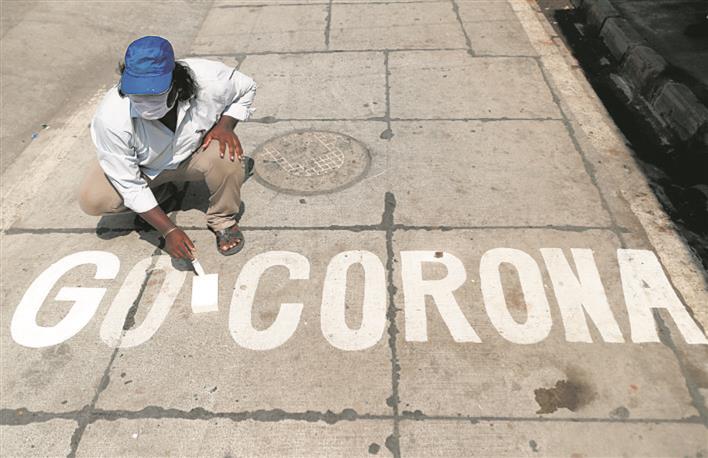
Tribune News Service
New Delhi, March 28
As scientists work on finding the link between temperature and Covid-19, the good news is India seems to be heading towards a particularly hot summer this year.
According to the India Meteorological Department, due to ongoing rainfall/thunderstorm activities, temperatures remained below normal by 2-4°C over most parts of the country this week. However, the mercury is set to rise from the first week of April.
Thereafter, the only way it should move is up, say weather experts. The government and scientists are also hoping after the 21-day lockdown ends by mid-April, a full-blown summer will be in place, slowing down the spread of Covid-19.
The Western Disturbance, which brought widespread rain and thundershowers to plains, snow in hills and pulled down temperatures earlier this week, is passing off.
Though another one is expected around March 30, weather expert Mahesh Palawat does not expect it to pull down the temperatures much. Temperatures are rising and the trend is expected to continue through April, reaching late 30°C and early 40°C by mid-April, he says.
Though the humidity levels in North India will remain relatively low, around the coasts it will be both hot and humid, factors that have been known to work against viruses of corona family.
Some studies have suggested Covid-19 will follow the “marked seasonality” shown by its genetic cousins prevailing among humans for centuries. In other words, the family is generally more volatile between December and April.
This has given a good reason to believe that by May/ June, the impact of the virus will be much less than what it is at present. Meanwhile, a preliminary study of Covid-19 progression trends by Massachusetts Institute of Technology (MIT) researchers has shown that much lesser cases were seen in hotter zones.
In an early trends research on the pandemic, Qasim Bukhari and Yusuf Jameel of MIT concluded that more research should be done to conclusively establish the impact of higher temperatures and humidity on disease trends.
The MIT study indicates that as high as 90 per cent of the transmissions until March 22 occurred in regions with temperature between 3 °C and 17 °C and absolute humidity between 4 to 9g/m3 (grams per cubic metre).
“The total number of cases in countries with mean January-February-early March temperature more than 18 °C and absolute humidity of over 9 g/m3 is less than 6 per cent,” say the authors.
“Wherever the temperatures were colder, the number of cases started increasing quickly. You see this in Europe, even though the healthcare there is among the best in the world,” they were quoted as saying.
Mercury set to rise
- According to IMD, due to ongoing rainfall and thunderstorm, temperatures remained below normal by 2-4°C over most parts of the country this week
- However, the mercury is set to rise from the first week of April
- Thereafter, the only way it should move is up, say weather experts
Forecast by weather department
Rain Till April 1
Western Disturbance likely to affect western Himalayan region from March 30. Scattered to widespread rain/snow (with isolated heavy falls over J&K) expected over region between March 31 and April 1
April 2-8
Near normal to below rainfall likely over Kerala, Western Himalayan region and northeastern states with mainly dry weather likely over rest of the country
Temperature
Till April 1: Below normal by 2-4 °C
April 2-8: Rise in maximum temperatures
Join Whatsapp Channel of The Tribune for latest updates.



























